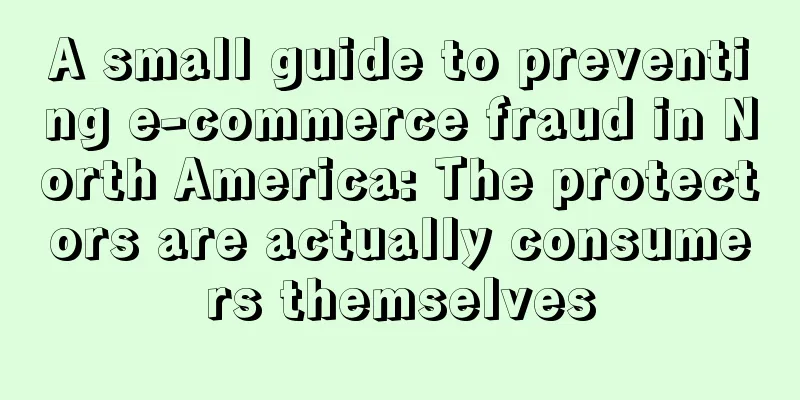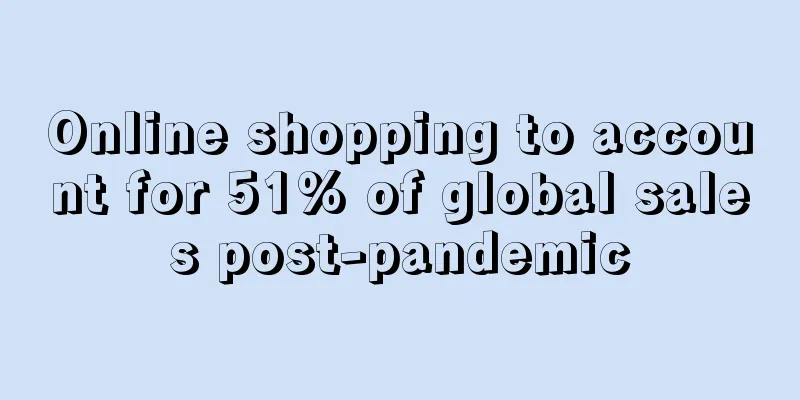A small guide to preventing e-commerce fraud in North America: The protectors are actually consumers themselves

|
Over the past year, consumers have relied more on online shopping than ever before . The pandemic, coupled with the closure of physical stores , means that a much larger amount of shopping is being done online. More and more American consumers are willing to buy goods such as medicines from online channels, and there are signs that these trends will continue once the pandemic passes .
However, consumers’ increasing online shopping also exposes them to emerging risks posed by counterfeit products.
In 2020, online retail sales accounted for more than 21% of all retail sales, up more than 5% year-over-year, the largest annual growth rate ever. During the recent holiday season alone, American consumers spent more than $188 billion on shopping , up more than 32% from the 2019 holiday season.
It is likely to continue to rise in 2021 and beyond. Considering the prevalence of e-commerce fraud , it is important for consumers to remain vigilant in virtual shopping environments .
As social media platforms have become the hub of consumers’ social and shopping activities , the inability to avoid connections with others makes it easier for criminals to approach consumers . This relationship between fraudsters, consumers, and e-commerce platforms can be summarized as a stable criminal opportunity structure, which is described as the “crime triangle” .
It is understood that consumers have no influence on the presence of counterfeit and forged products on e-commerce platforms , but rather due to various platform loopholes, the proliferation of fraudsters and the rise of e-commerce have almost guaranteed the activity of criminals .
Recently, the U.S. Trade Representative released its annual Notorious Markets List, highlighting online marketplaces that continue to pose a threat to U.S. consumers and companies. The report clearly shows that certain e-commerce sites are doing more than others to address the problem of scammers on their platforms, while their peers are less engaged, creating safe havens for bad actors to sell illegal goods to consumers.
However, some consumers are willing to pay for counterfeit and shoddy products, but most consumers still do not want the products they buy to be of poor quality.
However, the presence of a small number of consumers who pay the bills means that consumers have a say in product counterfeiting schemes, and those consumers want to avoid becoming victims of counterfeit products and want to destabilize the online product counterfeiting criminal triangle. By adopting self-monitoring behaviors, consumers will play an active role in self-protection when online. This behavior is related to consumer choices and can reduce their exposure to criminals. Although the responsibility for guardianship is shared by consumers, e-commerce platforms and brands.
While there is no foolproof strategy to avoid e-commerce scams , following a few simple steps can help consumers reduce the likelihood of becoming a target.
First, when purchasing regulated products such as pharmaceuticals, consumers should make sure to verify the legitimacy of the pharmacy website by visiting the FDA's "secure" website. Second, when shopping on e-commerce sites, make sure to verify the actual seller of the product whenever possible , following links in product ads and links in customer reviews to understand the product's origin.
Additionally, pay attention to product reviews and any product images that may be posted. Finally, whenever possible, buy directly from the manufacturer through their legitimate website to minimize the risk of exposure to scammers .
Ultimately, consumers are the best protectors against counterfeit and fake goods. North America E-commerce fraud consumer |
<<: Walmart offers free online grocery delivery for a limited time
Recommend
What is Fanyuan International? Fanyuan International Review, Features
Hangzhou Fanyuan International Logistics Co., Ltd....
Cainiao successfully transported 80 tons of 1 million doses of domestically produced 13-valent pneumococcal vaccine to Morocco
In order to provide multiple guarantees for this ...
Shandong Cao County is a hot spot! The per capita income is over 100,000 yuan, and it has contracted 90% of the coffin market in Japan
"I would rather have a bed in Cao County tha...
Transcosmos opens warehouse in Jakarta as Indonesia’s e-commerce market continues to expand
transcosmos Group announced that transcosmos Comm...
Awesome! Post-00s college students start businesses in Temu and Shein at the same time
I still remember that when I was in college, I ha...
What is Czech National Bank (CNB)? Czech National Bank (CNB) Review, Features
<span data-docs-delta="[[20,{"gallery"...
Shopee 12.12 Birthday Sale kicks off, igniting year-end holiday shopping boom with super deals
December 7, 2023, China - Recently, the leading e...
What is takstarmall? takstarmall Review, Features
Founded in 1995, takstarmall is a leading manufact...
What is Libra
Libra is a cross-border e-commerce comprehensive ...
Want to challenge Amazon? JD.com enters the European market
According to CNBC , JD.com is entering the Europe...
What is NAUTICA? NAUTICA Review, Features
NAUTICA was founded in 1983 and is a clothing bra...
Prime Day will be held on June 21 and 22, Shopee clears out inactive products
Prime Day is rumored to be on June 21 and 22 Acco...
The goods were rejected one after another, the seller: helpless!
Recently, a seller posted that his goods had been...
What is Survey Anyplace? Survey Anyplace Review, Features
Survey Anyplace is a survey maker that you can use...
What is Bloomscape? Bloomscape Review, Features
Bloomscape is a plant-focused shop that makes buyi...









